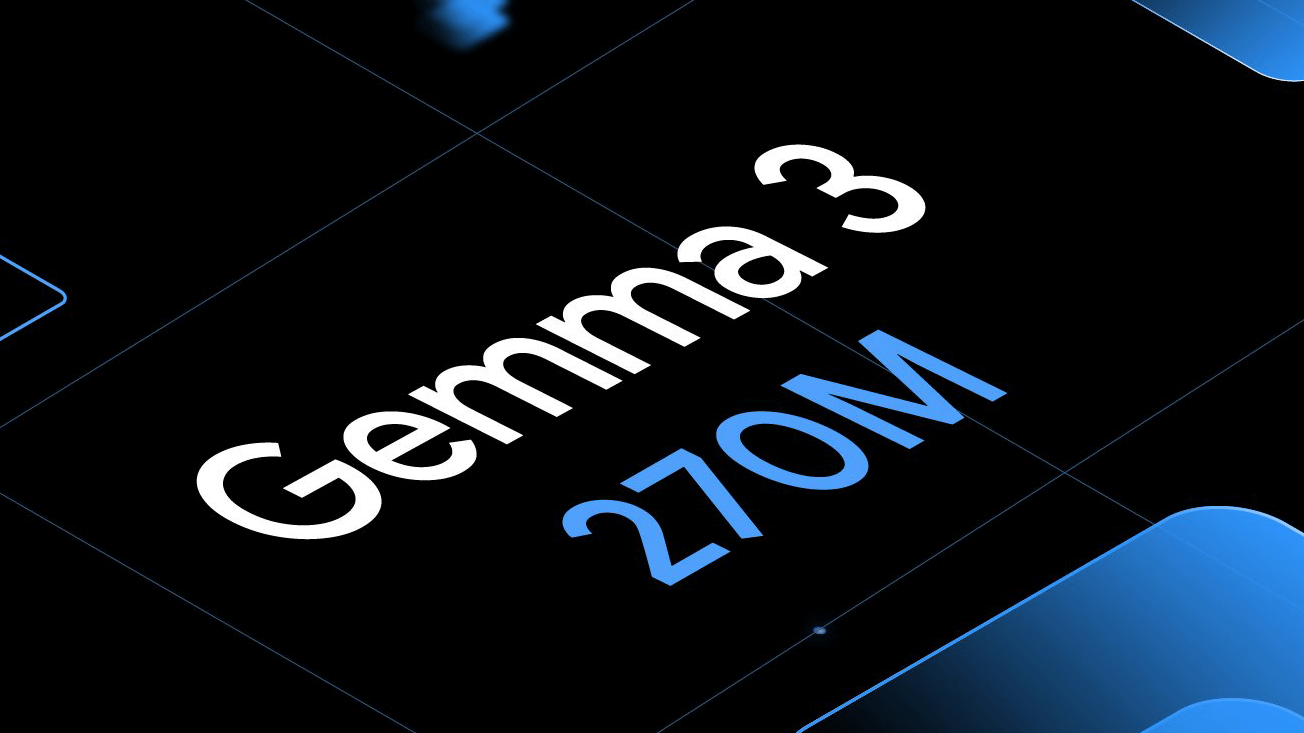Google’s Gemma 3 270M: Compact, Efficient, and Surprisingly Capable
Google’s AI initiative has taken a bold new direction with the release of Gemma 3 270M, a 270-million parameter model designed for maximum efficiency in resource-constrained environments. This release stands out in a landscape dominated by billion-parameter giants, by proving that smaller doesn’t mean weaker.
Officially part of the Gemma 3 family, the 270M model is fine-tuned for instruction-following, supports multimodal input, and is small enough to run on devices with as little as 2GB of RAM—a revelation for developers aiming to deploy AI at the edge.
Technical Breakdown: A Compact Powerhouse
Lightweight Architecture, Heavyweight Features
At just 270 million parameters, Gemma 3 270M still boasts capabilities traditionally reserved for much larger models:
- Shared training lineage with larger Gemma 3 siblings.
- Support for long context windows up to 128K tokens.
- Multimodal input handling (text and image).
- Multilingual capability covering over 140 languages.
These features, inherited from the full Gemma 3 stack, offer continuity for developers looking to scale their applications across model sizes without rebuilding from scratch.
Designed for Local and Offline AI
Gemma 3 270M isn’t merely small—it’s been engineered for offline operation on minimal hardware, including:
- Smartphones
- Browsers
- Microcontrollers
- IoT devices
This makes it ideal for privacy-sensitive applications, where data cannot be sent to the cloud, or for latency-critical systems, where immediate responses are required without server round-trips.
Instruction Following & Performance Metrics
Despite its size, Gemma 3 270M exhibits remarkable instruction-following skills out of the box, with minimal fine-tuning:
- IFEval score of 51.2, placing it at the top of its parameter class and competitive with far larger models.
- Demonstrates robust text generation, command interpretation, and logical sequencing, particularly in structured tasks.
Fine-Tuning Potential and Customization
Thanks to its compact footprint, fine-tuning Gemma 3 270M is faster and cheaper compared to multi-billion parameter models. Developers can:
- Build domain-specific assistants (e.g., medical, legal, technical).
- Customize for text classification, summarization, or Q&A.
- Train locally on consumer-grade GPUs or even CPU setups.
As open-source tooling becomes richer, this offers a path for startups and hobbyists to create production-ready AI applications without enterprise-scale infrastructure.
Use Case Highlights
| Use Case | Why Gemma 3 270M Works |
|---|---|
| Smartphone AI apps | Runs locally with minimal RAM and no cloud dependency |
| Voice Assistants | Low-latency interaction, private-by-default |
| Wearables/IoT | Embedded integration without excessive heat/power draw |
| Browser-based tools | Compatible with WASM and client-side inference |
| Enterprise microtools | Cost-effective deployment across millions of endpoints |
Developer Reaction: Enthusiasm and Realism
Tech commentator Simon Willison praised the model’s lean build, noting its real-world practicality:
“This model is tiny, but it works. You say ‘hi,’ ask basic questions… It even wrote a poem when SVG rendering failed. It’s perfect for quick, simple, useful tools.”
The community is already experimenting with creative deployments—local chatbot assistants, browser AI plug-ins, and even smart appliance integrations.
Strategic Implications for AI Development
While AI headlines often center around parameter counts and multimodal marvels, Gemma 3 270M brings a different philosophy to the table—minimal compute, maximum utility.
This model demonstrates:
- A shift toward scalable AI, not just bigger AI.
- A growing focus on edge intelligence and real-time responsiveness.
- A response to the demand for energy-efficient, privacy-preserving machine learning.
It is also a smart counter-move by Google in the face of efficiency-first trends exemplified by competitors like DeepSeek, Phi, and Mistral.
Final Verdict: Gemma 3 270M Is the Right-Sized Future of Everyday AI
Google’s Gemma 3 270M doesn’t aim to beat GPT-4 or Claude in raw power—it aims to empower millions of developers, startups, and hardware manufacturers with an AI engine that is agile, adaptable, and deployable anywhere.
With solid performance metrics, shared architecture with its more powerful siblings, and unmatched efficiency, this model is a strong case study in AI utility over AI enormity.









